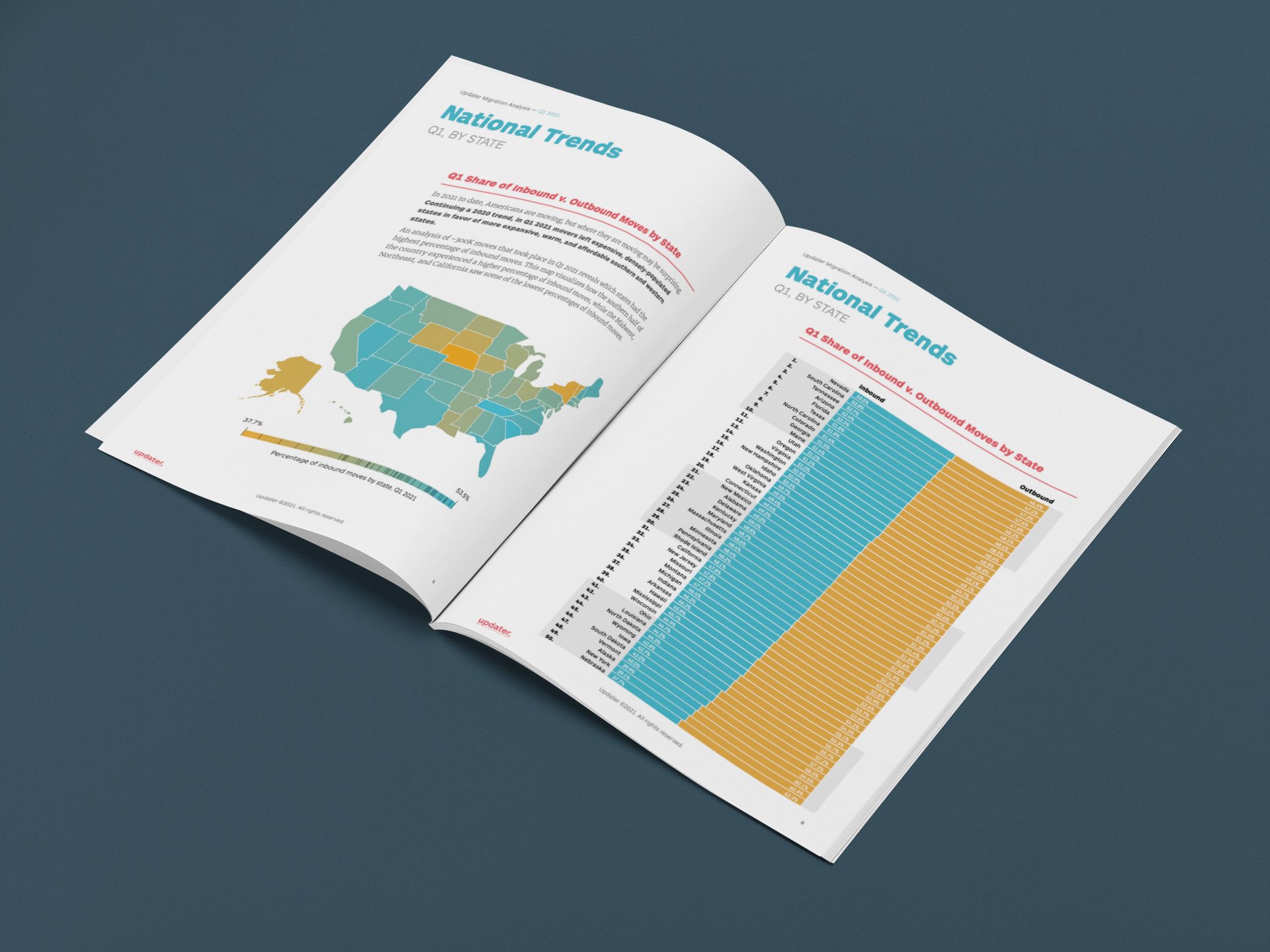The Pandemic Presents an Opportunity to Live Anywhere – Where Are People Going?

There’s been much anecdotal evidence that moving was one of the most popular pandemic activities. While relocations in early spring 2020 certainly fell below our seasonality-expected levels, movement did pick back up throughout the summer. That “summer boom” was felt by both large and small cities – large cities felt an exodus and small cities felt an influx.
Specifically, though, Fox News’ Stuart Varney wanted an answer to this question: where are people going?
Hear this answer and more, directly from Updater’s Founder and CEO, David Greenberg:
“In terms of cities gaining new residents, we’re watching Denver and Austin. Those cities have been gaining residents before the pandemic, but the rate of growth massively accelerated during the pandemic,” Greenberg stated. Both Denver and Austin rank as a top 15 city for both the overall number of inbound moves and the percentage of growth relative to each population.
“I’ll also point out a handful of cities in North Carolina. Relative to their population size, cities like Greenville, Raleigh, Wilmington, and Charlotte saw tremendous growth. They all saw almost no residents leave during the pandemic, but a huge number of new residents moving in,” Greenberg told Varney.
The influx into smaller cities begs the question: why? “Residents of America’s largest cities are looking for more space, but they also want to live where the restrictions to manage the pandemic may be less burdensome in their daily lives,” Greenberg continues. “Additionally, there’s been widespread acceptance of remote work. For many Americans, this is an unprecedented opportunity to live wherever they want.”
Cities that gained and lost residents
How did we calculate the cities that gained and lost residents? Updater analyzed a random sampling of 1M moves during the pandemic, from March 1 to September 30, 2020. We also compared those 1M moves to another random sampling of 1M moves during the same time period in 2019, 2018, and 2017 for multiyear trends. We then analyzed the data in two ways:
- A calculation of growth or loss of residents, as a percent of each city’s population
- A calculation of the absolute growth or loss for each city, measured in inbound and outbound moves
Cities that gained – as a percent of the population
Indexed and relative to their population size, here are the cities that have gained the most residents:
- Greenville, NC
- Tallahassee, FL
- Las Vegas, NV
- Denver, CO
- Spokane, WA
- Raleigh, NC
- Wilmington, NC
- Nashville, TN
- Reno, NV
- Phoenix, AZ

Cities that lost – as a percent of the population
Indexed and relative to population size, here are the cities that have lost the most residents:
- Odessa, TX
- Francisco, CA
- Boston, MA
- New York, NY
- Detroit, MI
- Madison, WI
- Waco, TX
- El Paso, TX
- Miami, FL
- Provo, UT

Year-over-year changes in specific cities
When measuring the absolute number of inbound and outbound moves into or out of cities, the cities that experienced the most severe changes are as follows:
- Denver, CO experienced the largest percent increase in inbound moves, up 43.3% since 2019. 43% more people moved into Denver during the pandemic months compared to the same time period last year.
- San Francisco experienced the largest percent increase in outbound moves, up 39.2% since 2019. Nearly 40% more people moved out of San Francisco during the pandemic months compared to the same time period last year.
For additional information about migration trends during the pandemic, please keep your eyes on Updater’s National Migration Trends blog.











